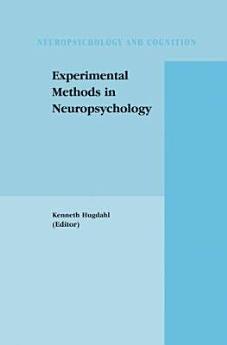Experimental Methods in Neuropsychology
Kenneth Hugdahl
2012年12月 · Neuropsychology and Cognition 第 21 冊 · Springer Science & Business Media
電子書
235
頁數
report評分和評論未經驗證 瞭解詳情
關於這本電子書
Clinical neuropsychology typically employs large standardized test-batteries to cover the cognitive deficits caused by brain lesions and neurodegenerative diseases. The neuropsychologist moves between three levels of explanation; the behavioral level, the cognitive level and the brain level. The behavioral level is measured as actual performance on a test, i. e. the obtained test score. The cognitive level refers to the underlying cognitive processes that are reflected in the test scores. The brain level, finally, refers to the neural underpinnings and substrates to the cognitive processes. The recent decades have witnessed a dramatic increase in our knowledge about cognitive processes and the underlying neural substrates. Experimental techniques and paradigms have played an important role in the accumulation of new knowledge in this field. Thus, there is a need to present a collection of experimental paradigms and techniques to neuropsychology. Some of these paradigms and techniques have however a long history in neuropsychology, like dichotic listening and EEG measures, while others are new and novel to most neuropsychologists like animal model paradigms and brain imaging and brain stimulation. Experimental techniques typically aim at discovery of causal relationships and with a focus on search for mechanisms. In the first chapter, Merill Hiscock presents an overview of experimental techniques and its adaptation in clinical neuropsychology, with a focus on behavioral techniques and methods.
為這本電子書評分
請分享你的寶貴意見。
閱讀資訊
智能手機和平板電腦
手提電腦和電腦
你可以使用電腦的網絡瀏覽器聆聽在 Google Play 上購買的有聲書。
電子書閱讀器及其他裝置
如要在 Kobo 等電子墨水裝置上閱覽書籍,你需要下載檔案並傳輸到你的裝置。請按照說明中心的詳細指示,將檔案傳輸到支援的電子書閱讀器。







